technical challenges of using lithium batteries in counterbalanced forklifts
As the materials handling industry increasingly adopts advanced power technologies, many fleet managers are considering lithium-ion solutions for their forklifts. While the benefits of lithium batteries are well known—fast charging, low maintenance, consistent power—the challenges of using lithium batteries in counterbalanced forklifts often get less attention. For any operation considering this transition, it is critical to understand these challenges thoroughly to plan effectively, avoid costly mistakes, and maximize ROI. This article explores the technical challenges faced when integrating lithium batteries into counterbalanced forklift fleets, offering insights to help you navigate these issues successfully.
- Understanding the fundamental challenges of lithium batteries in counterbalanced forklifts
- Weight and counterbalance challenges in counterbalanced forklifts
- Electrical system compatibility challenges
- Charging infrastructure challenges in warehouse environments
- Thermal management challenges for lithium batteries
- Battery management system integration challenges
- Safety challenges of using lithium batteries in counterbalanced forklifts
- Cost-related challenges when switching to lithium batteries
- Maintenance and service challenges for lithium batteries
- Training and operational challenges for staff
- Supply chain and availability challenges
- Environmental and recycling challenges for lithium batteries
- Strategic planning challenges for fleet managers
- Best practices to mitigate challenges of using lithium batteries in counterbalanced forklifts
- Final thoughts on the challenges of using lithium batteries in counterbalanced forklifts
Understanding the fundamental challenges of lithium batteries in counterbalanced forklifts
The shift from lead acid to lithium
Switching from traditional lead-acid batteries to lithium-ion technology is not simply a matter of swapping one battery for another. The chemistry, voltage profiles, weight distribution, and charging needs differ. These fundamental challenges impact vehicle balance, safety, and performance.
Chemistry differences and performance impacts
Lithium batteries have different discharge characteristics. Their voltage remains consistent until the end of charge, which can strain forklift motors designed for lead-acid voltage curves. Recognizing these electrical challenges is essential to avoid equipment incompatibility or unexpected performance issues.
Weight and counterbalance challenges in counterbalanced forklifts
Why weight matters
A key design element of counterbalanced forklifts is their heavy rear-end weight that counteracts the load being lifted. Lead-acid batteries contribute significantly to this ballast effect because they are heavy and dense. Lithium batteries are often 30–50% lighter. This weight reduction, while seemingly beneficial for efficiency, introduces serious challenges.
Maintaining proper balance
Forklift stability depends on carefully engineered weight distribution. Lighter lithium batteries may compromise this balance, increasing the risk of tip-overs or reduced rated lifting capacity. Counterbalance challenges often require custom solutions, such as adding steel ballast, to match the weight profile of lead-acid systems.
Retrofitting for weight compensation
Manufacturers sometimes offer retrofit kits to address these challenges. These kits add weight in the battery compartment, but they also raise costs and complexity. Understanding and planning for this retrofit is crucial to maintain safety and certification compliance.
>>See also advantages of using lithium batteries in forklifts
Electrical system compatibility challenges
Voltage and current delivery
Lithium batteries deliver consistent voltage throughout discharge, unlike lead-acid batteries that exhibit voltage sag. While this is generally seen as an advantage, it can present challenges for older forklifts designed around the voltage drop of lead-acid systems. Motors may overheat or experience unexpected stress.
Controller and software limitations
Some forklifts use electronic controllers tuned to lead-acid characteristics. Switching to lithium may require controller reprogramming or replacement to avoid damaging the motor or battery. These electrical challenges increase deployment costs and require specialized technical support.
Incompatibility with legacy chargers
Many warehouses have chargers built specifically for lead-acid batteries. Lithium batteries typically need purpose-built chargers with different voltage cutoffs and charging profiles. Using incorrect chargers risks damaging expensive lithium packs and voiding warranties, creating significant challenges for operations upgrading their fleets.
Charging infrastructure challenges in warehouse environments
Opportunity charging demands
One benefit of lithium technology is opportunity charging. However, this also creates new challenges for infrastructure planning. Warehouses may need to install multiple fast chargers at strategic locations to enable short, frequent charging sessions during breaks or shift changes.
Electrical supply requirements
Fast chargers draw significant power. Older facilities may not have the electrical capacity to support multiple simultaneous fast-charging sessions. Upgrading facility electrical systems represents one of the most overlooked challenges and can require major capital expenditure.
Managing charging schedules
Without disciplined management, opportunity charging can lead to congestion at charging stations, inefficient workflows, and underutilized equipment. Addressing these operational challenges requires staff training and planning to ensure seamless integration of lithium charging routines.
Thermal management challenges for lithium batteries
Heat generation during charging
Fast charging generates heat, and lithium batteries are sensitive to high temperatures. Effective thermal management is essential to prevent degradation, reduced lifespan, or safety hazards. These thermal challenges require forklifts to have built-in battery management systems (BMS) with temperature monitoring and active cooling.
Cold storage operations
Cold storage warehouses introduce another layer of challenges. Lithium-ion performance declines sharply at low temperatures, and charging below freezing can permanently damage cells. Special cold-weather lithium batteries with integrated heaters may be required, adding cost and complexity.
Battery management system integration challenges
Importance of BMS
Lithium batteries rely on sophisticated battery management systems to monitor cell voltages, temperatures, and charging states. Integrating these systems with forklift onboard electronics can pose technical challenges.
Communication protocols
Not all forklifts support the communication protocols used by lithium battery BMS. Ensuring compatibility may require custom software updates or hardware retrofits. These integration challenges can increase installation time and costs.
Safety challenges of using lithium batteries in counterbalanced forklifts
Fire risks
Although lithium batteries are generally safe, they can pose thermal runaway risks if damaged, overcharged, or exposed to high temperatures. This risk requires safety training, specialized handling procedures, and sometimes dedicated fire suppression systems—an added challenge compared to lead-acid batteries.
Damage from impacts
Forklifts operate in demanding environments with risks of collisions or dropped loads. Physical damage to lithium packs can puncture cells and trigger fires. Addressing these safety challenges involves designing protective enclosures and training operators in safe handling.
Regulatory compliance
Adopting lithium technology may require updates to safety documentation, risk assessments, and compliance with local or national regulations. Navigating these regulatory challenges is critical for legal and insurance reasons.
Cost-related challenges when switching to lithium batteries
High upfront costs
Lithium batteries can cost 2–4 times more upfront than lead-acid alternatives. While they promise lower total cost of ownership over time, the initial capital requirement is a barrier for many operations. Managing these cost challenges often requires creative financing or leasing arrangements.
Infrastructure investment
Beyond battery cost, upgrading chargers, electrical systems, and facility layouts introduces additional expenses. These cost challenges must be factored into ROI calculations to ensure realistic budgeting.
ROI uncertainty
For operations with low utilization or single-shift schedules, the ROI case for lithium is less compelling. Evaluating these financial challenges carefully helps avoid poor investment decisions.
Maintenance and service challenges for lithium batteries
Limited technician expertise
Lithium-ion technology is relatively new in the forklift industry. Many in-house maintenance teams lack experience diagnosing or repairing lithium battery issues. This skills gap is one of the key challenges in maintaining fleet uptime.
Vendor dependence
Lithium battery suppliers often maintain tight control over servicing. This can lock companies into vendor relationships for repairs, software updates, or replacements, limiting flexibility and driving up costs—an operational challenge worth considering.
Spare parts availability
With fewer standardization efforts across the industry, sourcing compatible components for repairs can be difficult. This parts availability challenge can lead to extended downtime in case of failures.
Training and operational challenges for staff
Changing charging habits
Operators used to lead-acid batteries may not be familiar with opportunity charging practices. Without proper training, they may underutilize charging windows or misuse chargers. Overcoming these behavioral challenges is essential for achieving expected uptime.
Safety protocols
Staff need to understand new risks associated with lithium batteries, including proper procedures for damage inspections, fire risks, and safe charging. Establishing and enforcing these safety training protocols is another operational challenge.
Supply chain and availability challenges
Market volatility
The global lithium supply chain is subject to price volatility and geopolitical risks. These supply chain challenges can lead to fluctuating battery prices or delivery delays, making long-term fleet planning more difficult.
Lead times
Lead times for lithium battery orders can be significantly longer than for lead-acid, especially during high demand periods. Addressing these availability challenges requires careful planning and close vendor relationships.
>>See also how many solar panels do you need to generate 15kwh daily
Environmental and recycling challenges for lithium batteries
End of life management
While lithium batteries reduce emissions during use, their disposal poses challenges. Recycling infrastructure for large-format lithium batteries is less developed than for lead-acid. Managing these end-of-life challenges responsibly is critical for sustainability goals.
Environmental impact of mining
Lithium and other materials used in battery production have environmental extraction costs. Companies committed to sustainability must consider these upstream challenges in their ESG strategies.
Strategic planning challenges for fleet managers
Total cost of ownership modeling
Accurately modeling TCO is more complex with lithium batteries due to higher upfront costs, infrastructure upgrades, and maintenance differences. Navigating these planning challenges requires detailed analysis and expert input.
Aligning with operational goals
Not all fleets will see equal benefits from lithium technology. Managers must match battery technology to their operational needs, shift patterns, and budget. Avoiding misalignment challenges ensures successful deployment.
Best practices to mitigate challenges of using lithium batteries in counterbalanced forklifts
Conducting a thorough site assessment
A comprehensive assessment of facility power capacity, charging locations, and workflow is the first step in overcoming many of these challenges.
Partnering with experienced vendors
Working with vendors who understand lithium technology and can support integration, training, and service helps address technical and operational challenges.
Phased implementation
Rolling out lithium batteries in phases allows companies to learn, adapt, and spread costs over time, reducing deployment challenges.
Final thoughts on the challenges of using lithium batteries in counterbalanced forklifts
Understanding the challenges of using lithium batteries in counterbalanced forklifts is essential for any operation considering this technology. From weight distribution and electrical compatibility to safety, cost, and infrastructure planning, these challenges require careful evaluation and strategic planning. While lithium batteries promise transformative benefits, they are not a plug-and-play solution. By recognizing these challenges early, investing in training, and working with experienced partners, companies can make informed decisions that maximize uptime, safety, and return on investment. As the industry evolves, overcoming these challenges will be key to unlocking the full potential of lithium technology in the world of counterbalanced forklifts.

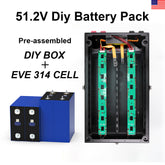

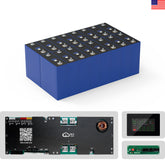

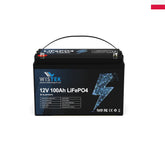
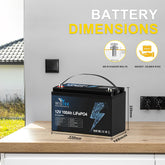

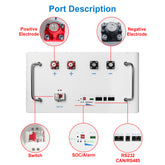
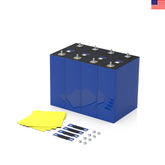
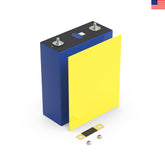
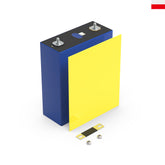

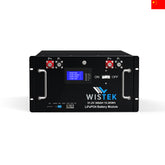
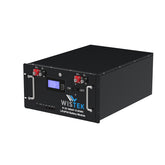
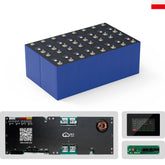








Leave a comment
All blog comments are checked prior to publishing